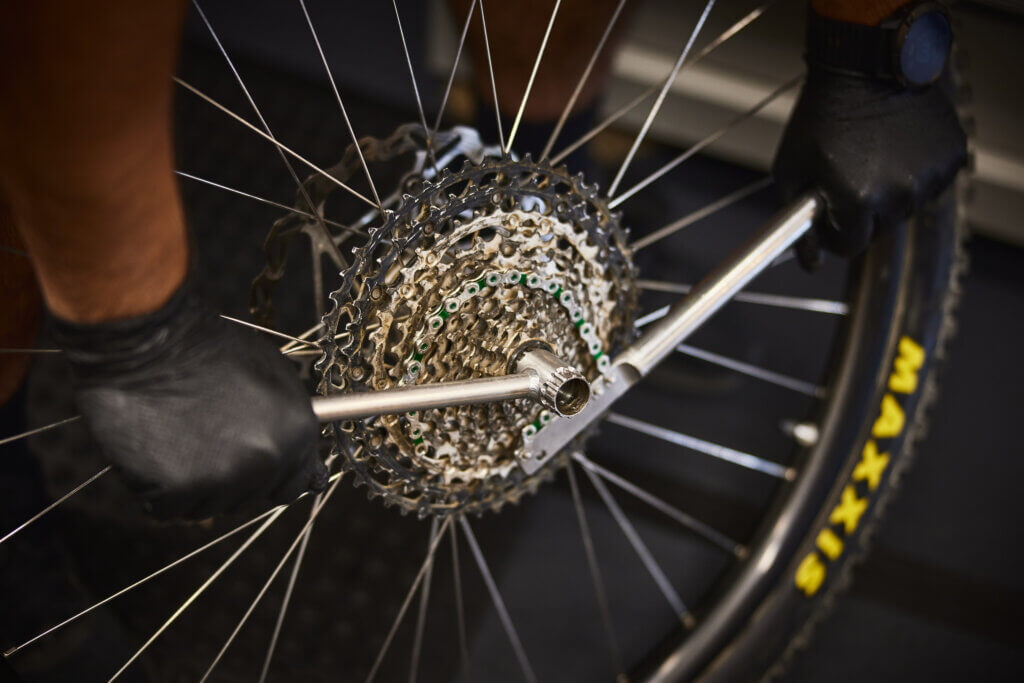Let’s be real—nobody likes spending more time in the bike shop than on the trails. If you’re tired of shelling out cash for repairs or just want to keep your ride running smooth, we’ve got you covered. Here are five no-nonsense ways to keep your mountain bike out of the workshop and on the dirt where it belongs.
1. Clean Your Bike Like You Mean It
Mud, dirt, and grime aren’t just bad for your bike’s looks—they’re a one-way ticket to worn-out parts and pricey repairs. A little cleaning goes a long way.
What You Can Do:
- Hose it down after every ride: Get rid of the big stuff with water, but avoid blasting bearings or seals directly.
- Scrub the drivetrain: Use a brush and some degreaser to clean your chain, cassette, and chainring. A clean drivetrain shifts better and lasts longer.
- Lube the chain: Once it’s dry, add some bike-specific lube. Do this every 160–240 km, or after riding in wet or muddy conditions.
Why It Matters: A clean bike not only rides better but also lets you spot problems before they turn into disasters.
2. Keep Your Tires in Check
Your tires are the only thing between you and the trail, so don’t neglect them. Proper tire care means fewer flats and better grip when you need it most.
What You Can Do:
- Check tire pressure before every ride: Use a gauge and pump it up to the recommended PSI (it’s printed on the side of the tire). For most mountain bikes, that’s between 22–35 PSI, depending on your weight and riding style.
- Inspect for damage: Look for cuts, punctures, or worn-down treads. If you see cords or the tread’s gone flat, it’s time for new tires.
- Go tubeless if you haven’t already: Tubeless setups are less likely to pinch flat, and you can run lower pressures for better traction.
Fun Fact: Riders who keep their tires at the right pressure report up to 30% fewer flats. That’s a lot fewer walks back to the trailhead.
3. Don’t Ignore the Drivetrain
Your chain, cassette, and chainring work hard, and they’ll wear out faster if you don’t take care of them. A little TLC here can save you a ton of cash down the line.
What You Can Do:
- Clean and lube your chain regularly: A dirty or dry chain wears out faster and takes the cassette and chainring with it.
- Check for chain stretch: Use a chain checker tool. If it’s stretched more than 0.75%, replace it. Most chains last around 2,400–3,200 km, but it depends on how and where you ride.
- Shift smoothly: Avoid slamming the gears under heavy load. Ease off the pedals slightly when shifting to reduce stress on the drivetrain.
Pro Tip: Replacing your chain before it’s too worn can save your cassette and chainring, which are way more expensive to replace.
4. Keep Your Brakes in Shape
Brakes are kind of a big deal—you need them to stop, after all. Keeping them in good shape means better control and fewer surprises on the trail.
What You Can Do:
- Check your brake pads: If they’re thinner than 1 mm, swap them out. Worn pads can damage your rotors.
- Look at the rotors: If they’re warped or gouged, they’ll need replacing.
- Bleed hydraulic brakes if they feel spongy: Air in the lines makes your brakes less effective. If you’re not comfortable doing it yourself, take it to a shop.
Why It Matters: Good brakes mean you can ride harder and faster without worrying about stopping power.
5. Check and Tighten Bolts Regularly
Mountain bikes take a beating, and bolts can loosen over time. A quick check can prevent parts from falling off or getting damaged.
What You Can Do:
- Use a torque wrench: Check critical bolts like stem, handlebar, and seat post clamps every few rides. Most bolts should be tightened to the manufacturer’s recommended torque (usually printed on the component).
- Don’t over-tighten: Too much force can strip threads or damage components.
- Check pivot points on full-suspension bikes: Make sure suspension linkage bolts are snug but not over-tightened.
Pro Tip: A loose bolt can ruin your ride—or worse, cause a crash. A quick check takes minutes and saves headaches.
6. Store Your Bike Like You Care
Where and how you store your bike can make a big difference in how long it lasts. Leaving it outside or in a damp garage is a recipe for rust and worn-out parts.
What You Can Do:
- Keep it indoors: A dry, temperature-controlled spot is ideal.
- Use a bike stand or wall mount: This keeps the tires off the ground and takes pressure off the suspension.
- Cover it up if you have to store it outside: A waterproof cover can protect it from rain and UV damage.
Pro Tip: Storing your bike properly can add years to its life and save you from unnecessary repairs.
Wrapping It Up
Keeping your mountain bike out of the workshop isn’t rocket science—it’s about regular cleaning, checking your tires, taking care of the drivetrain, maintaining your brakes, tightening bolts, and storing it right. Do these things, and you’ll spend less time at the shop and more time shredding trails.
Got a tip of your own? Drop it in the comments or share this post with your riding buddies. Let’s keep those bikes rolling!


